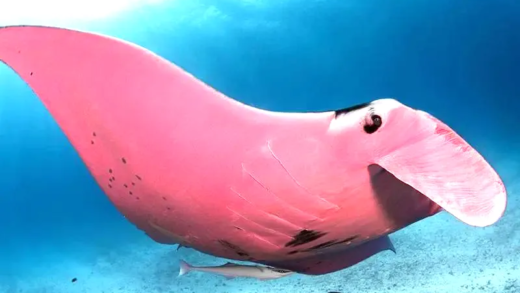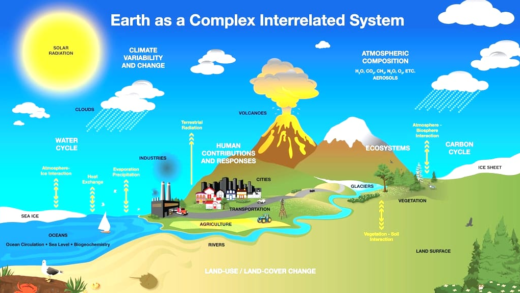Titanosaurs were colossal dinosaurs that thrived during the Late Cretaceous period. They showcased remarkable diversity in size and features, adapting to various habitats. Their study offers valuable insights into ecosystem roles and evolutionary history, highlighting their significance in paleontology.
Titanosaurs: What Are They?
Titanosaurs are an intriguing group of dinosaurs known for their colossal size. These massive herbivores belong to the sauropod family, characterized by their long necks, large bodies, and tails. Titanosaurs thrived during the Late Cretaceous period, showcasing remarkable adaptations that helped them survive in various habitats.
Key characteristics of titanosaurs include:
- Size: They were among the largest dinosaurs, with some species reaching lengths of over 100 feet.
- Body Structure: Titanosaurs had robust bodies, sturdy limbs, and elongated necks, allowing them to reach high vegetation.
- Diverse Features: Some species possessed unique traits, such as armor-like plates or spines along their backs.
Understanding titanosaurs provides insight into the diversity of dinosaur life and their ecological roles during the Mesozoic era.
How Big Were They?
The size of titanosaurs is nothing short of astonishing. Comparatively, these giants dwarfed most other dinosaurs. For instance, the well-known Tyrannosaurus rex, a formidable predator, was only a fraction of the size of some titanosaurs. Studies suggest that the largest titanosaurs could weigh up to 100 tons and measure over 30 meters in length.
To put this into perspective:
- Length: Titanosaurs could stretch longer than a blue whale.
- Weight: Their mass could equal that of several elephants combined.
- Height: Some estimates suggest they could reach heights equivalent to a four-story building.
This immense size allowed titanosaurs to access food sources that smaller dinosaurs could not, giving them a significant advantage in their habitats.
Timeline of Titans: When Did They Roam?
Titanosaurs roamed the Earth primarily during the Late Cretaceous period, approximately 100 to 66 million years ago. This era was marked by a warm climate and lush vegetation, creating an ideal environment for these giant herbivores.
Key points in their timeline include:
- Origin: Titanosaurs evolved from earlier sauropods, adapting to their environments.
- Peak Diversity: They reached their peak during the late stages of the Cretaceous, with numerous species coexisting.
- Extinction: The mass extinction event around 66 million years ago led to the demise of titanosaurs along with many other dinosaur species.
This timeline is crucial for understanding the evolutionary history of titanosaurs and their significance in the dinosaur lineage.
Unique Features of Titanosaurs
Titanosaurs are remarkable for their unique features that differentiate them from other dinosaurs. One of the most notable aspects is their size, with some species being the largest land animals ever to walk the Earth. In addition to sheer size, titanosaurs had specific adaptations that enhanced their survival:
- Neck Length: Their long necks allowed them to reach high vegetation, accessing food that many other herbivores could not.
- Body Armor: Some titanosaurs had bony plates or spikes along their backs, likely serving as protection against predators.
- Wide Feet: Their broad feet helped support their immense weight and provided stability while moving.
These features not only made titanosaurs stand out in their ecosystems but also played a crucial role in their feeding strategies and habitat utilization. Understanding these traits helps paleontologists piece together the complex puzzle of dinosaur life.
Movement Patterns of Titanosaurs
The movement of titanosaurs was as fascinating as their size. Given their massive bodies, one might think they moved slowly, but they were surprisingly agile for their scale. Titanosaurs had strong limbs that supported their weight, allowing them to traverse various terrains:
- Walking Style: They likely walked in a manner similar to modern elephants, with a slow and steady gait.
- Speed: Despite their size, they could move at a decent pace when necessary, especially to escape predators.
- Social Behavior: Evidence suggests that titanosaurs may have traveled in herds, which could have provided protection and facilitated foraging.
These movement patterns indicate that titanosaurs were well-adapted to their environments, allowing them to thrive in diverse habitats during the Late Cretaceous period.
A Titan’s Menu: What Did They Eat?
Titanosaurs were herbivores, primarily feeding on vegetation. Their diet included a wide variety of plant materials, which was crucial for their survival given their massive size. Some key aspects of their diet include:
- Types of Plants: They consumed leaves, ferns, and possibly the tops of trees, thanks to their long necks.
- Feeding Habits: Titanosaurs likely spent a significant portion of their day foraging for food, utilizing their height to access abundant food sources.
- Digestive Adaptations: Their large bodies required efficient digestion, suggesting they had specialized systems to break down tough plant material.
By understanding the diet of titanosaurs, we can appreciate their role in their ecosystems and how they contributed to the balance of prehistoric environments.
A Diverse Family of Titanosaurs
Titanosaurs represent an incredibly diverse group within the dinosaur family. With numerous species identified, their diversity is a key factor in understanding their ecological impact during the Late Cretaceous. Some titanosaurs were massive, while others were relatively smaller, showcasing a range of adaptations to different habitats.
Key aspects of their diversity include:
- Size Variation: From the gigantic Argentinosaurus to the more modestly sized Alamosaurus, titanosaurs came in various sizes.
- Habitat Adaptations: Different species adapted to various environments, from lush forests to open plains, indicating their versatility as herbivores.
- Unique Features: Some species developed distinctive traits, such as specialized feeding adaptations or protective armor, enhancing their survival chances.
This diversity offers vital insights into paleontology, as it reflects how titanosaurs adapted to their environments and coexisted with other species, providing a clearer picture of the prehistoric world.
Lessons from Titanosaurs
Studying titanosaurs provides modern science with valuable lessons. Their existence and adaptations shed light on how large herbivores can influence ecosystems and the dynamics of prehistoric environments.
Key lessons include:
- Ecosystem Roles: Titanosaurs played significant roles in their ecosystems, affecting plant growth and distribution through their feeding habits.
- Survival Strategies: Understanding their adaptations helps scientists comprehend how species can thrive in changing environments.
- Extinction Insights: The extinction of titanosaurs prompts discussions about the impact of catastrophic events and the resilience of life on Earth.
These insights are crucial not only for paleontology but also for contemporary conservation efforts, as they illustrate the complex interconnections within ecosystems.
Evolutionary Role of Titanosaurs
Titanosaurs hold an essential place in the evolutionary history of dinosaurs. They evolved from earlier sauropods and represent a significant branch in the tree of dinosaur evolution.
Key points about their evolutionary role include:
- Adaptive Evolution: Titanosaurs showcase how evolution can lead to varied forms and sizes, adapting to diverse ecological niches.
- Connection to Other Dinosaurs: Their evolution highlights the link between different dinosaur groups, providing a better understanding of dinosaur lineage.
- Fossil Record: The fossils of titanosaurs contribute to the broader narrative of dinosaur evolution, illustrating shifts in size, morphology, and habitat usage over time.
By studying titanosaurs, researchers can piece together the complex puzzle of dinosaur evolution, revealing how these giants fit into the grand story of life on Earth.





Comments are closed.